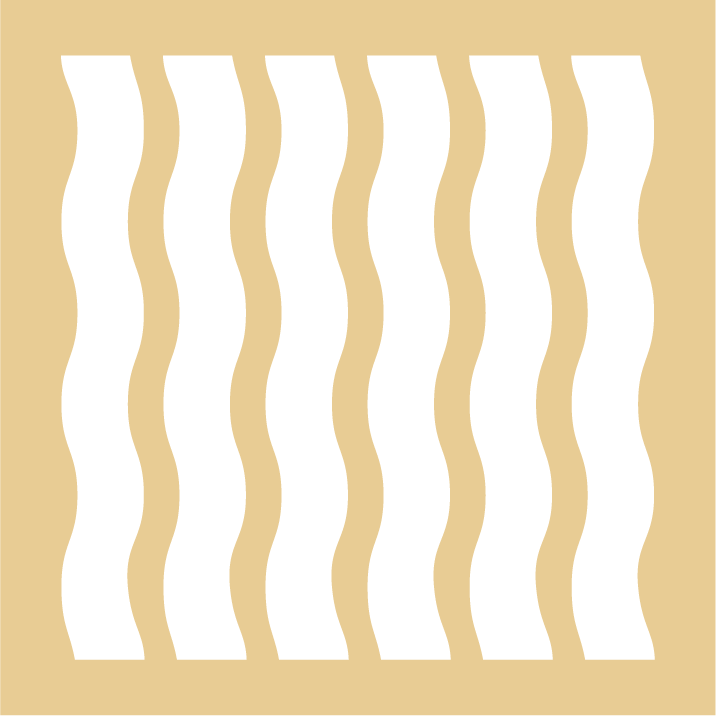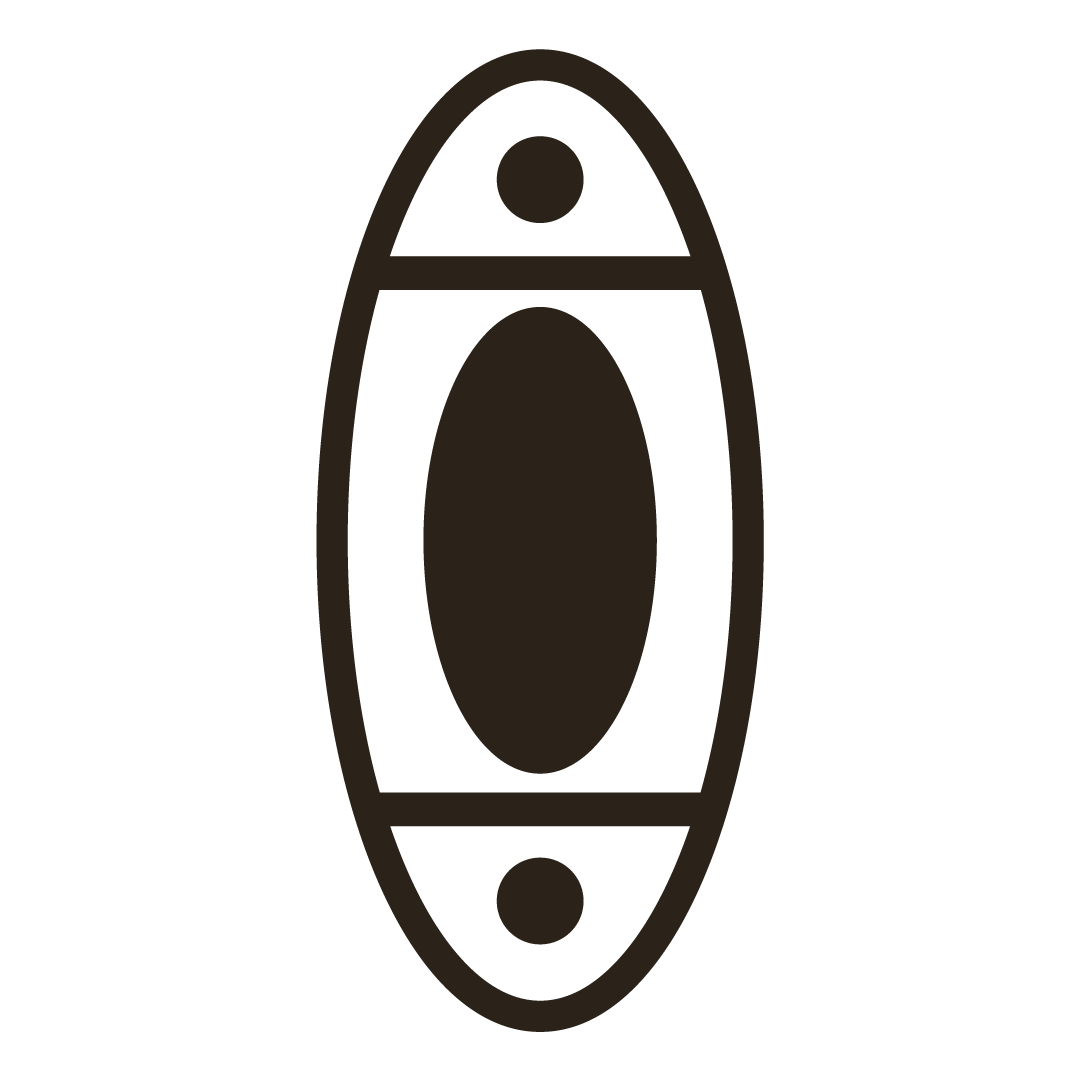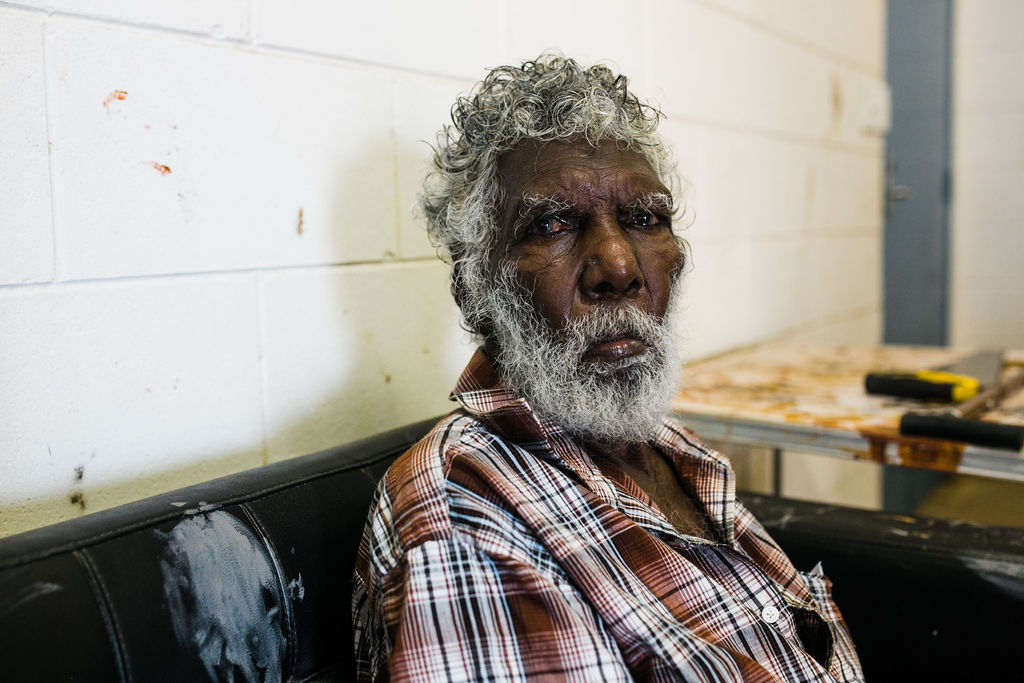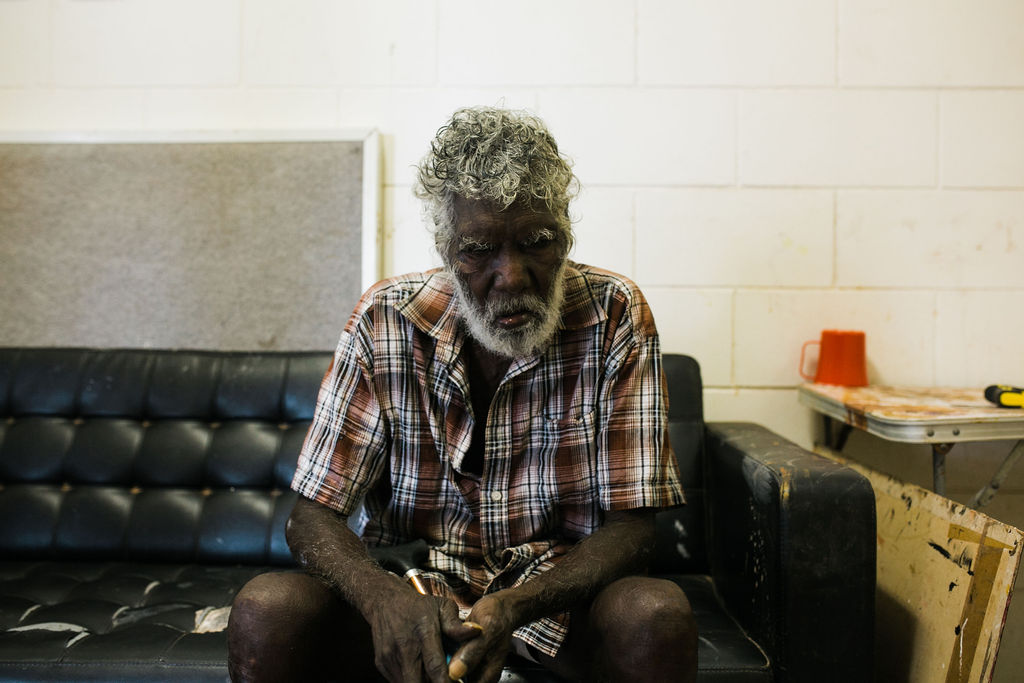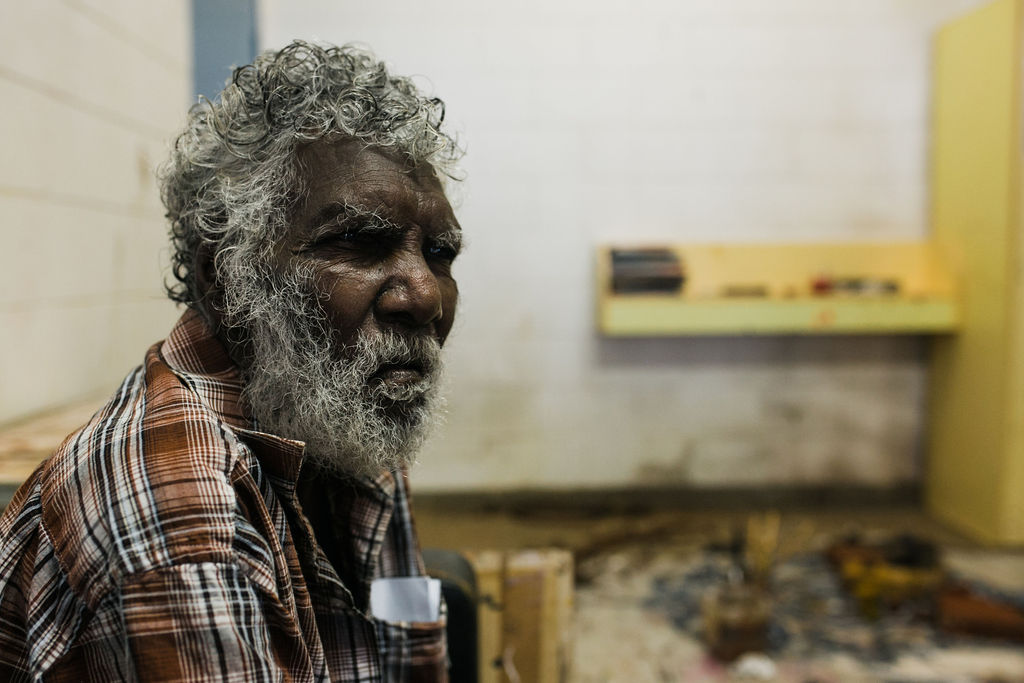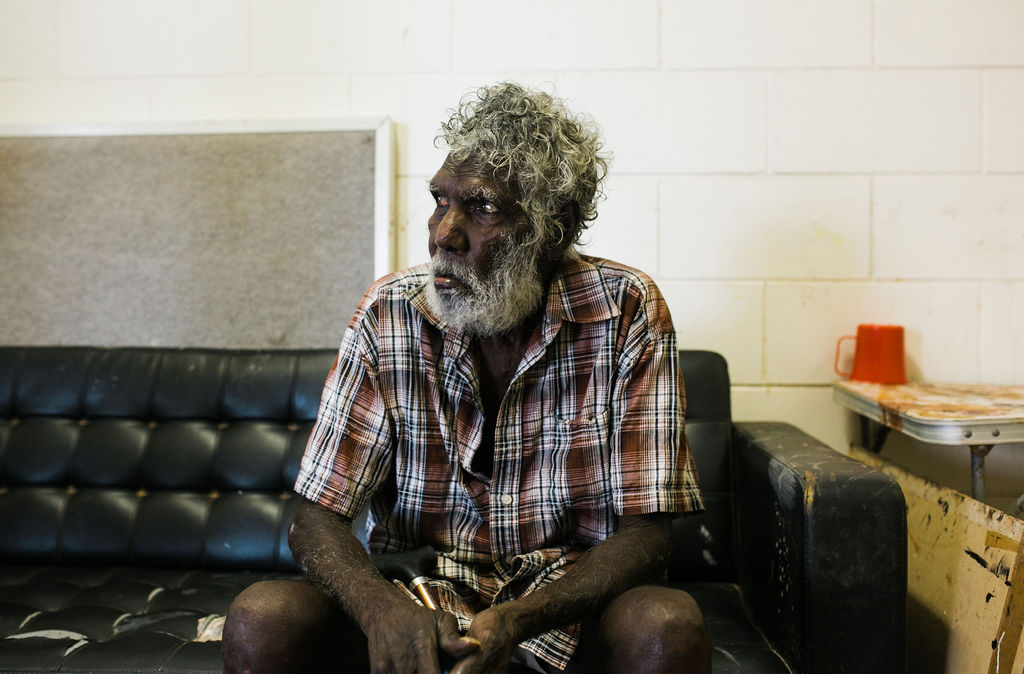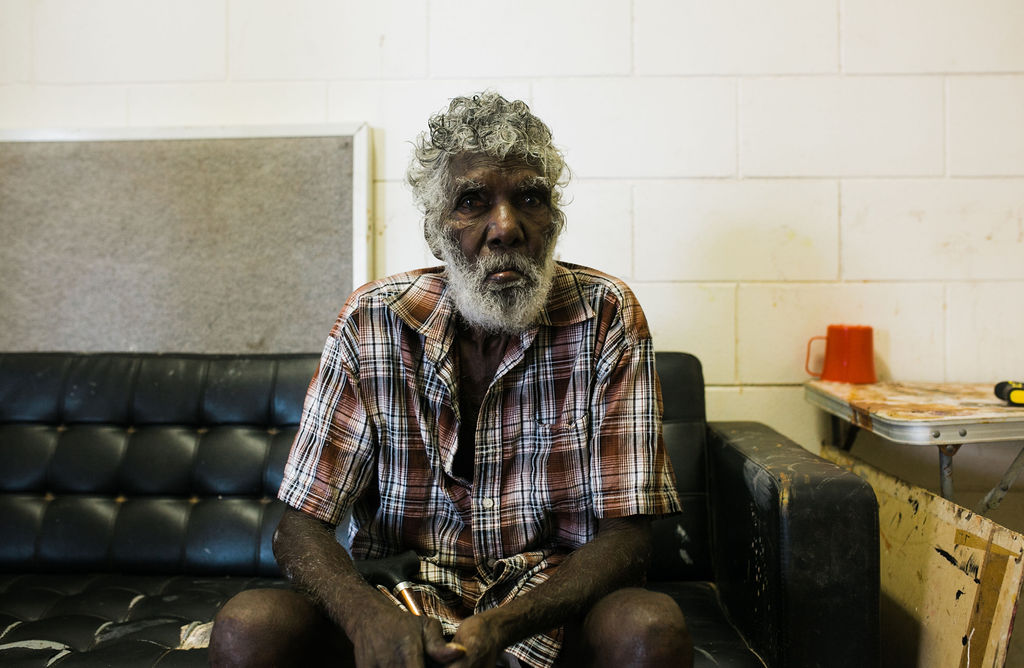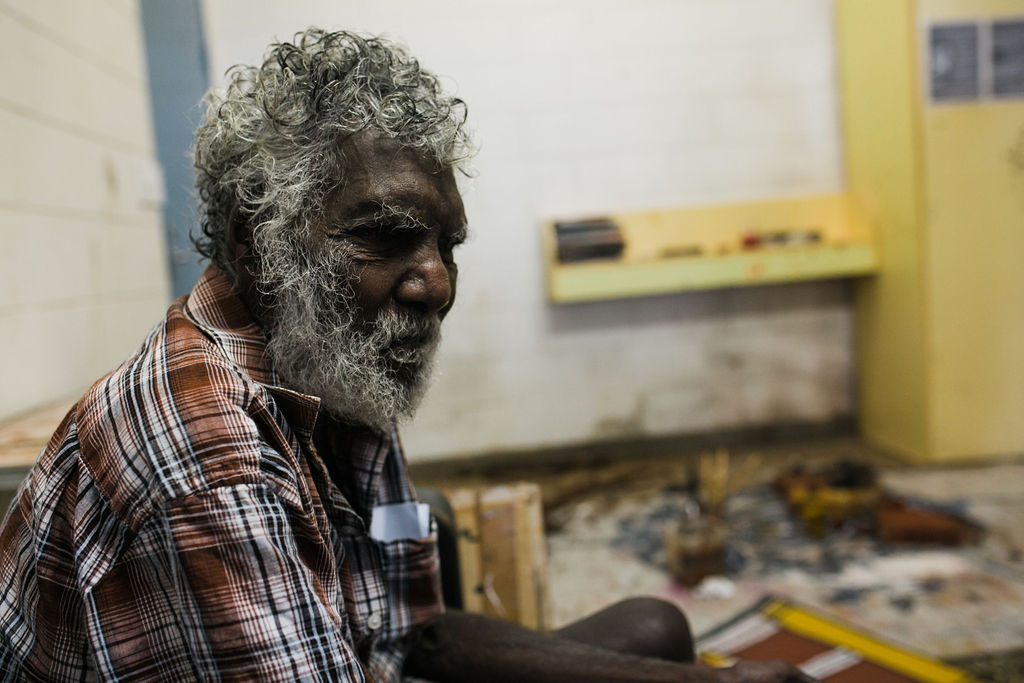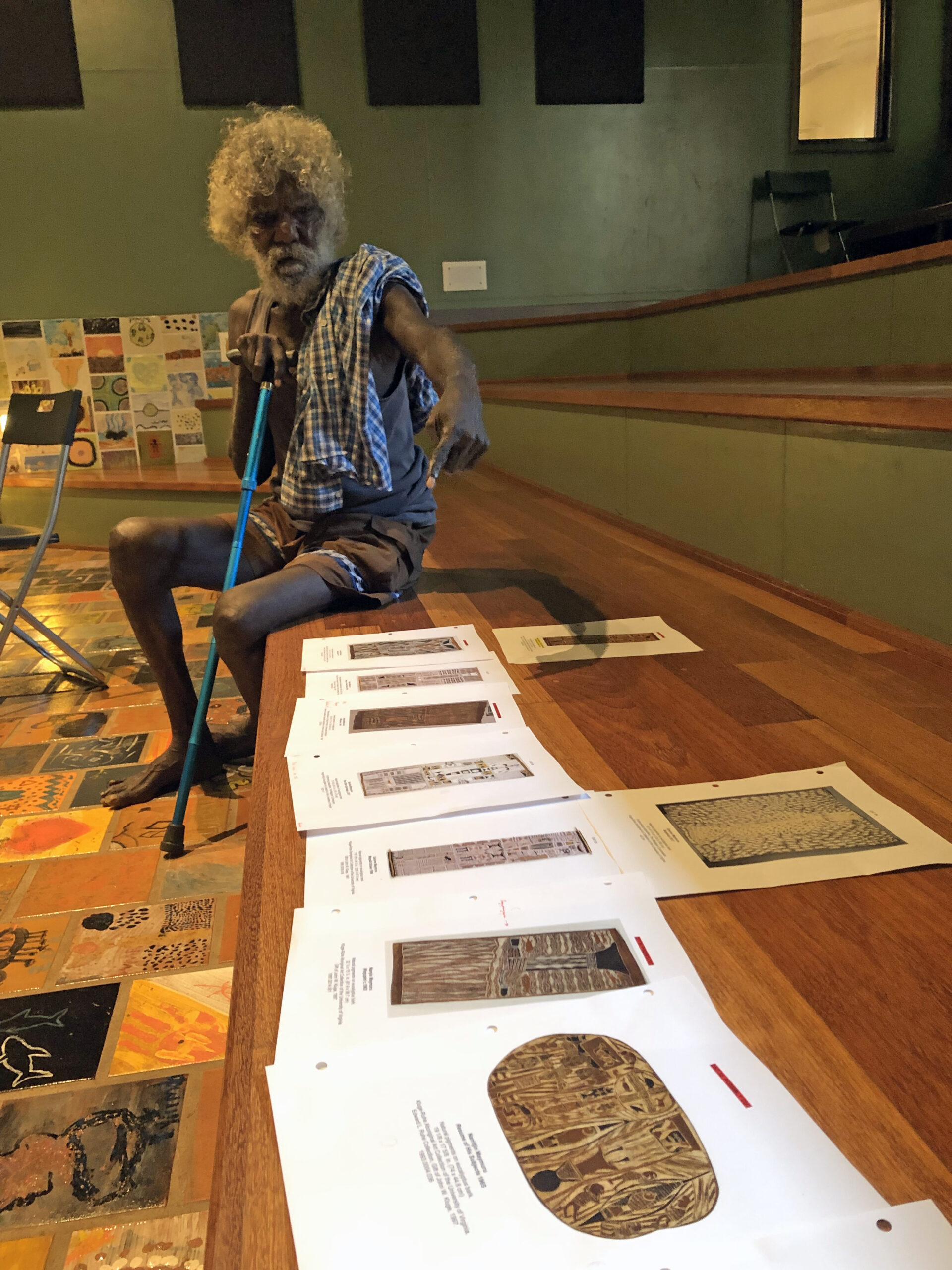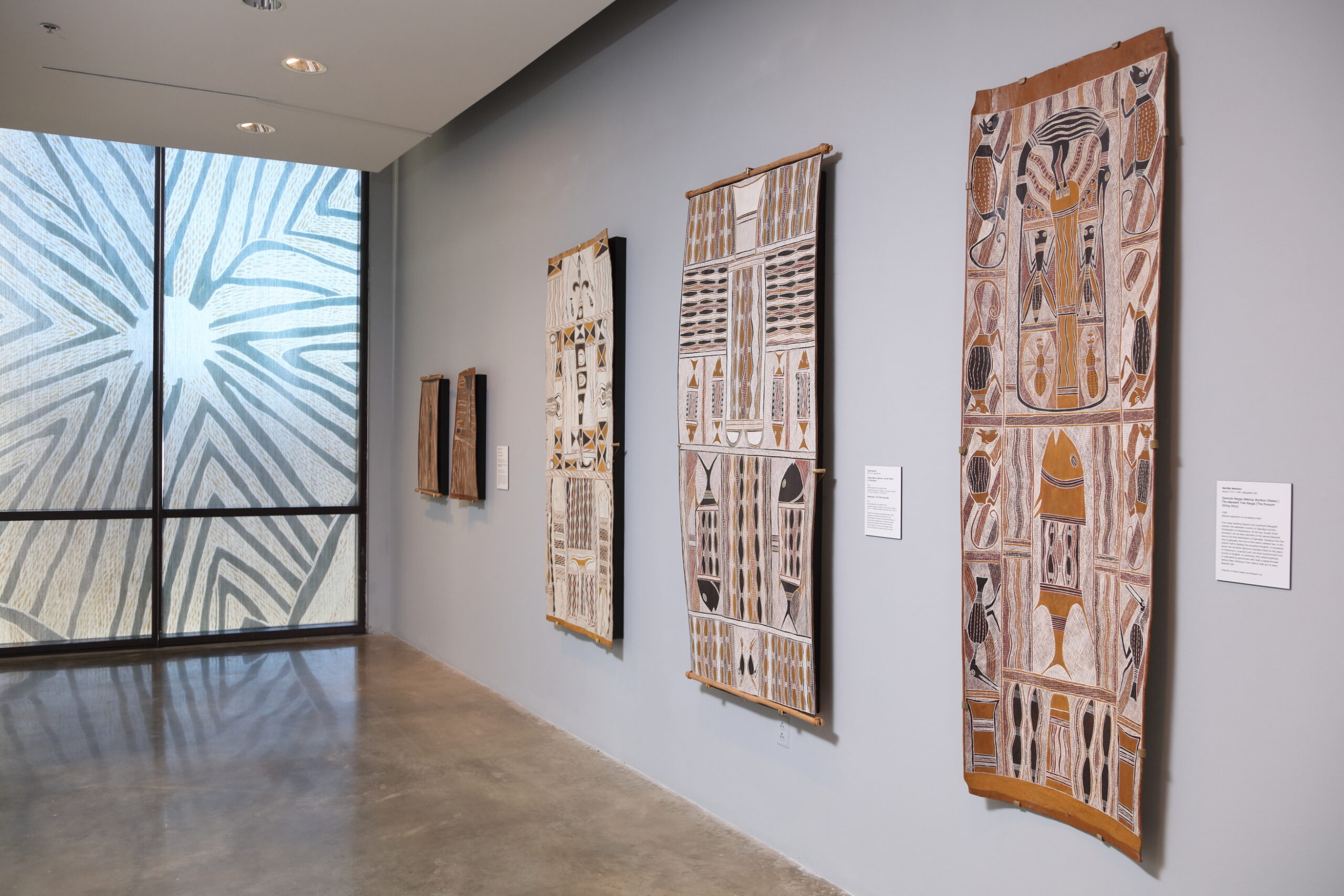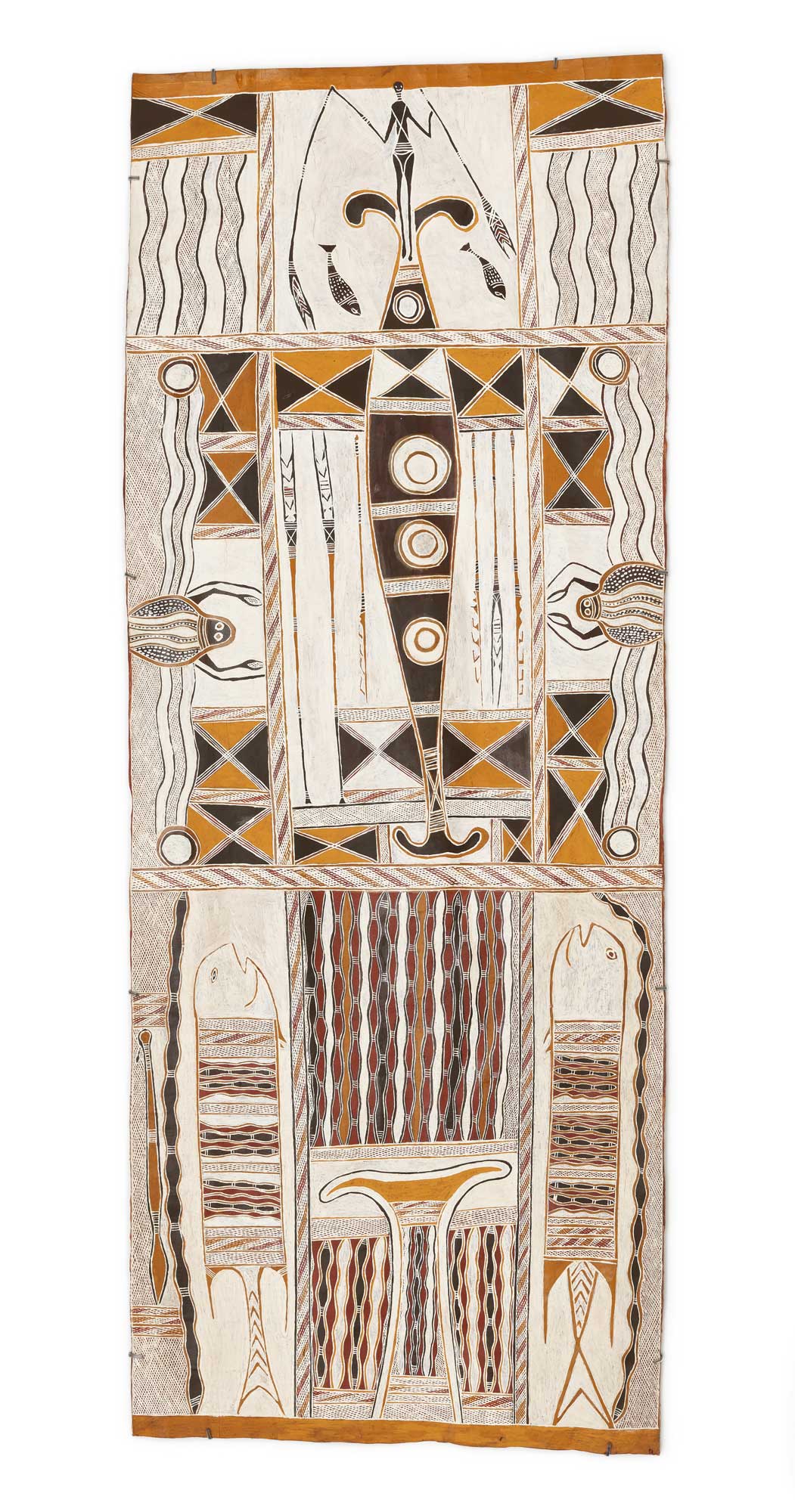
"This story that I am telling you is the story that we paint. I will tell you the surface part of the story—the part you can see in these paintings. These paintings that are in the United States, they speak directly to our sacred Law. And these stories, painted on bark, have sacred and hidden meanings that women and children are not allowed to know. Not even Indigenous people from other areas are allowed to know. That is the Law. It is the same for all the clans and their sacred designs. It is the Law. For the Gumatj, the Maŋgalili and Maḏarrpa: they can only speak of the surface part of the stories, so that everyone can know the surface version too."
– BALUKA MAYMURU
More Info
Baluka’s most recent painting, Makmanya | The Other Djarrakpi, like Narritjin’s Djomula Raŋga | The Marawili Tree Raŋga (1968), represents two clan estates.
The lower panel is another painting of Wayawupuy but oriented toward the sea to the area in the bay where the Ŋuykal (kingfish, giant trevally, Caranx ignobilis) emerges. The background pattern refers to yoku (waterlily, Aponogeton elongatus) and to the freshwater flowing toward the sea.
The image of the spear thrower in the left panel alludes to Ŋuykal’s relationship with the ancestral Ŋulumun: the hunted and the hunter.
The anvil-shaped figure references the fish’s tail, poised to propel it through the water, an analogue for the hunter’s spear and spear thrower. At the same time, it alludes to the Dhukururru, the ancestral rock that makes its appearance in the saltwater. Ancestral beings are both the foundation of place and the medium of connection between places. Just as Waŋarr move, so, too, do people and spirits.
The top half of Baluka’s painting refers not to the Maŋgalili place on Cape Shield but to the site of the yiŋapuŋapu on Groote Eylandt. Djarrakpi, or Djarrakpa in the Wanindilyakwa language of Groote Eylandt, is the place the ancestral women Nyapililŋu originally set out from when they journeyed to the mainland. The Guwak (the Koel ancestor) and Nyapililŋu are present in the geometric elements of the painting: the Marawili tree of the Guwak rises from the top and bottom of the yiŋapuŋapu; and the cross-square design represents breast girdles of the Nyapililŋu. In this delicate and elegant painting, the images seem to be dancing off the surface of the bark.
Baluka identified the site of Djarrakpa as an island called Makmanydja. In looking at the map he thought that it corresponded to one called Mungwarndumanja Island. He went there as a younger man. It was a Makarräta site of yiŋapuŋapu where the now-deceased Marrirra Marawili "broke the spears" in successfully withstanding a dispute resolution ceremony.
The site is north of the settlement of Umbakumba. Djuŋgaya (ceremonial manager) Wukuṉ Waṉambi commented that Thomas Amagula had told him that the current motel at Alyangula was built on a yiŋapuŋapu site. Baluka told us that whilst traveling over the deep water between the mainland and here you must not check for djuku (head lice) as this will attract danger. According to Yinimala Gumana, Makmanydja is actually a small island located between Djarrakpi and Groote Eylandt.
– Howard Morphy and Buku-Larrŋgay Mulka Centre
Additional Information
Decade
2017
Medium
Natural pigments on eucalyptus bark
Dimensions (IN)
76 3/4 × 29 9/16
Dimensions (CM)
195 × 75 cm
Credit
Kluge-Ruhe Aboriginal Art Collection of the University of Virginia.
The 2017–19 Kluge-Ruhe Maḏayin Commission
Purchased with funds provided by James G. and Marcy Harris, 2023.
Narrative
Maŋgalili
The Maŋgalili clan belongs to the Yirritja moiety. Their major spiritual theme revolves around the...
Songline
Yiŋapuŋapu
The yiŋapuŋapu is a low relief sand sculpture, elliptical in shape, that is used in...
Location
2010s
The 2010s saw Buku-Larrŋgay Mulka go from strength to strength. At the National Aboriginal and...
About The Artist(s)
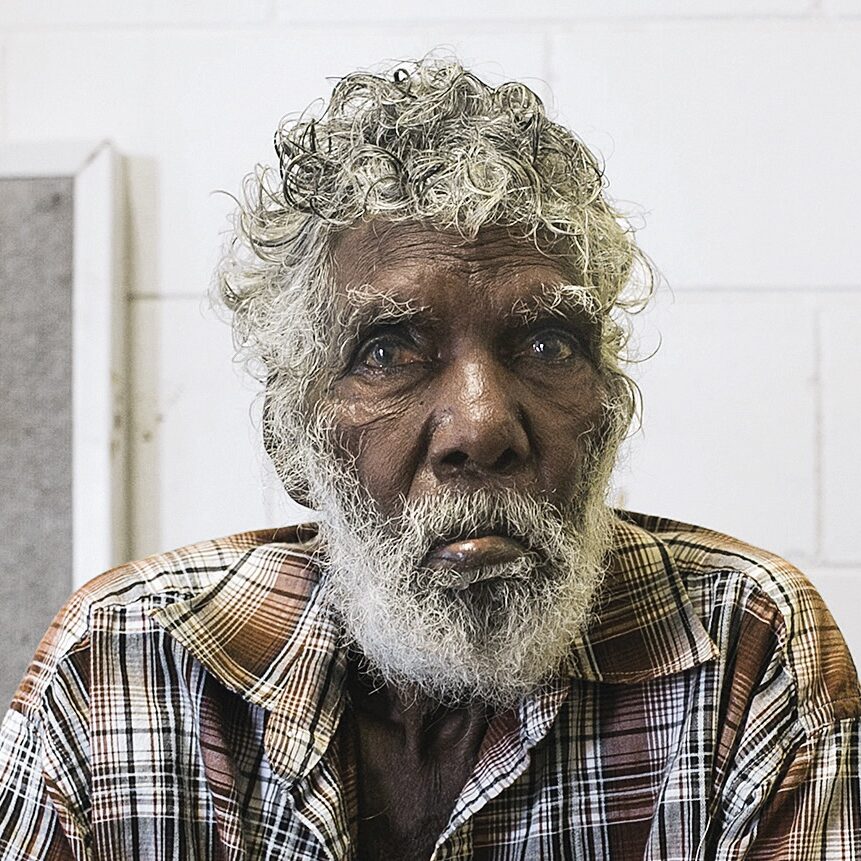
Clan
Maŋgalili
Artist Dates
Born 1947
Alternative Names
Baluga
Baluka Maymuru
Baluka Maymuru is the son of Nänyin’ Maymuru. A respected elder and ceremonial leader, Baluka is the head of the Maŋgalili clan. From 2000-2003 he was the chairman of Buku-Larrŋgay Mulka. He is one of the few artists to have produced works for the 1996 John W. Kluge commission as well as the 2017-19 Kluge-Ruhe Madayin commission. He is the two time winner of the Wandjuk Marika 3D Memorial Award at the National Aboriginal and Torres Strait Islander Art Awards in 1987 and 2006.
Collections Represented
Art Gallery of Western Australia
Australian Institute of Aboriginal and Torres Strait Islander Studies
Australian National Maritime Museum
Berndt Museum of Anthropology at the University of Western Australia
Kluge-Ruhe Aboriginal Art Collection of the University of Virginia
Museum and Art Gallery of the Northern Territory
National Museum of Australia
